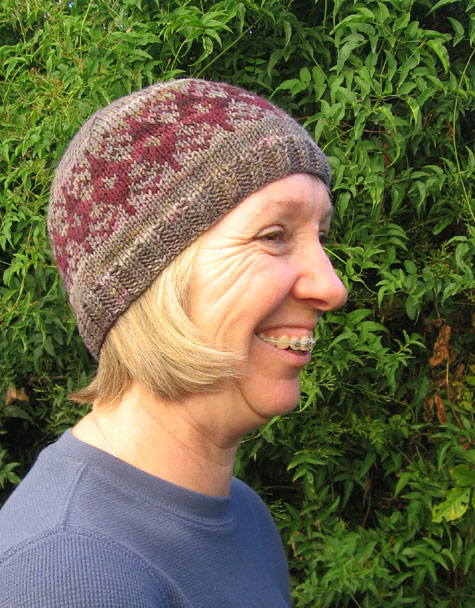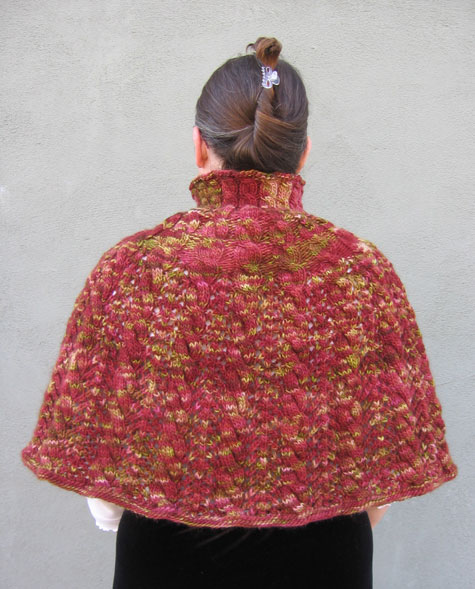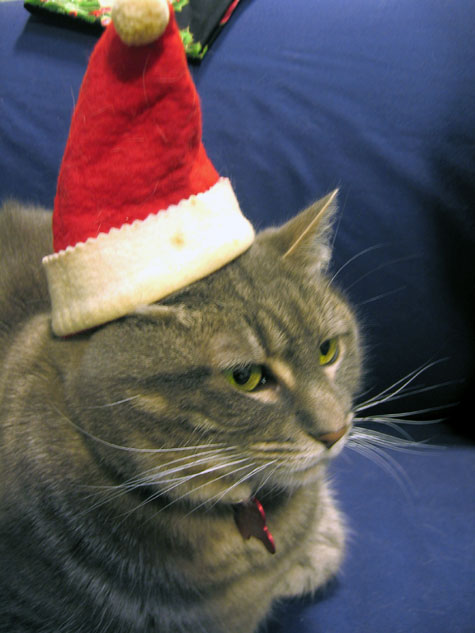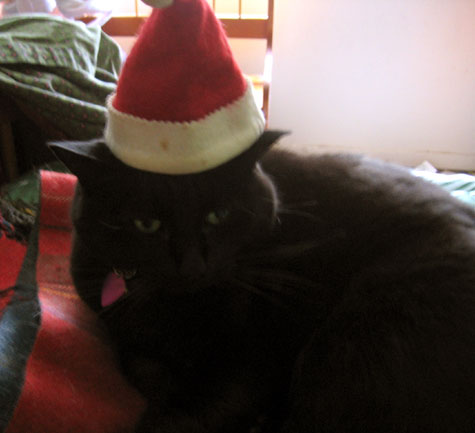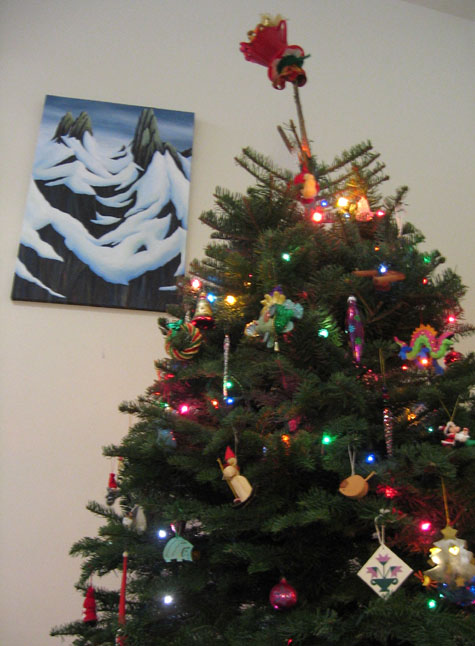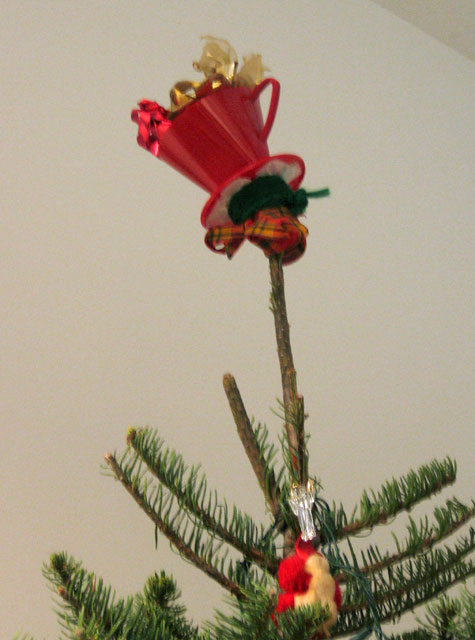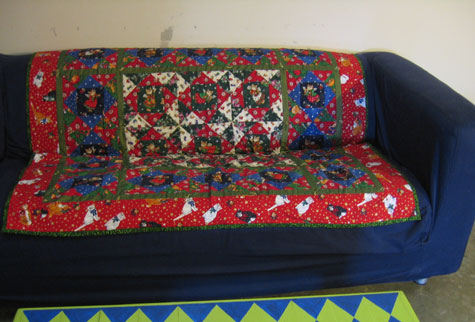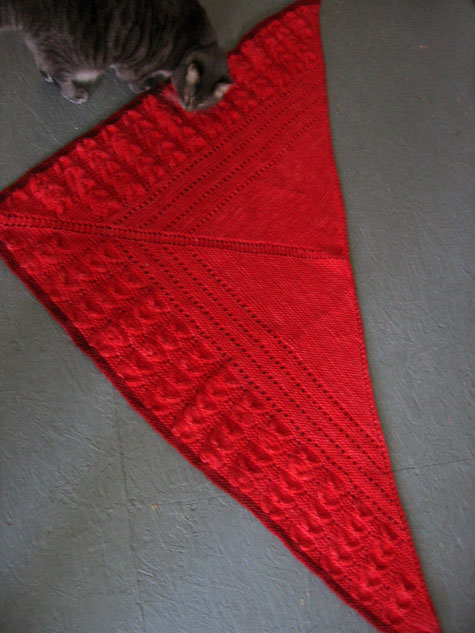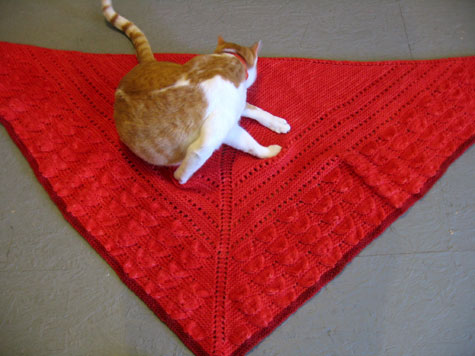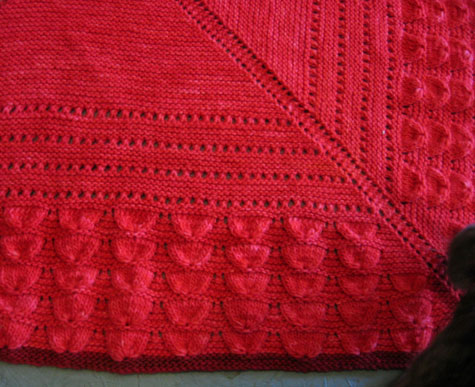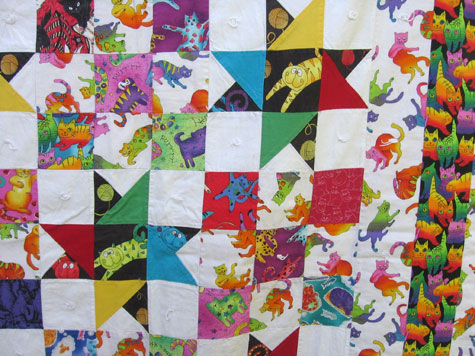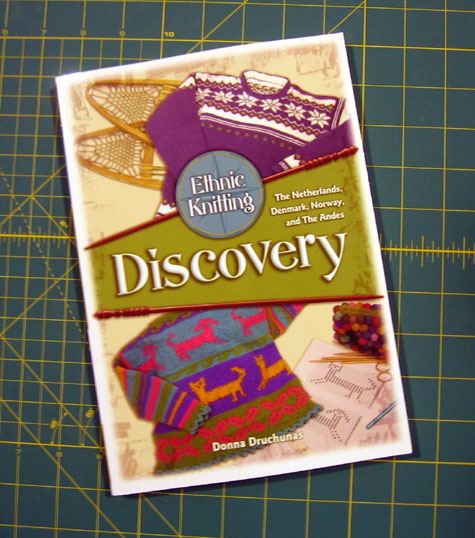
Donna Druchunas has written exactly the sort of book I love: not just a collection of patterns, but an introduction to an entire genre of knitting with the goal of helping readers design their own patterns. Ethnic Knitting Discovery (Nomad Press) begins with a chapter on working without patterns that outlines basic sweater shapes, sizing, gauge, and ease. In chapter 2, Druchunas explains techniques common to all the chapters: circular knitting, cutting (!) arm and neck openings, colorwork, and the like. She then moves on to individual chapters on the knitting of each region that are designed to teach specific skills and that include a set of sample patterns readers can knit as is or vary to suit themselves.
The first regional chapter, on the Netherlands, focuses on knit/purl patterning, centering motifs and horizontal patterns, standard drop-shoulder styling, and picking up sleeves at the armholes (as opposed to sewing sleeves in after knitting). The list of techniques grows more ambitious with each chapter: welts and half-gussets in the Denmark chapter, for example; cut armholes, boat necks, and colorwork in the round in the Norway chapter; steeks, puntas (scalloped edges), and alternate techniques for K and P stitches in the Andean chapter.
If you’ve done some sweater knitting, but stil can’t imagine making the jump from following patterns to designing your own, this book will see you comfortably through that transition. Each of the regional chapters also offers patterns for two sweaters and an additional accessory, but the reader has the option of approaching the patterns in three ways. One can follow the pattern as written, use a template to customize the pattern for any yarn weight and finished size, or follow a schematic for quick, improvisational knitting.
Ethnic Knitting Discovery includes an index—something I’d like to see in more knitting books, as it facilitates working specific skills/techniques into one’s own knitting repetoire.
My one regret is that this book doesn’t include any photos. The techniques and projects are amply illustrated with clear line drawings, but how I wish it included some regional photos for inspiration. Some shots of an Andean marketplace, for example, could inspire knitters to leap far beyond the frameworks offered by the book.
[Side note: while tracking down a link for the above paragraph, I wandered off on a tangent that led me to this tank cozy worked as by knitters and crocheters from across the EU and US and coordinated by Marianne Joergensen.]
This book is a good investment not only for those interested in ethic knitting, but for aspiring designers as well.
P.S. The Cameo Shell Stitch Shawl with the unplanned band of contrast color along the bottom? I am so loving it. It does wonders taking the bite out of the cold in Melissa’s cement-block, not-centrally-heated, artist’s-loft apartment.


